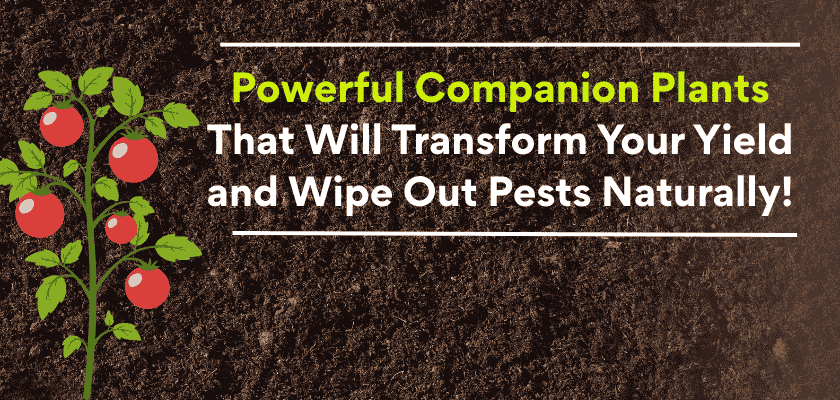
Introduction
Picture a vibrant garden where plants thrive together like a close-knit community, each playing a unique role in supporting one another. This companion cropping technique harnesses nature’s power to repel pests, enrich soil, and boost plant growth.
By strategically pairing crops, gardeners create natural pest barriers—some plants deter harmful insects while attracting beneficial ones. Additionally, legumes like peas and beans fix nitrogen, enhancing soil fertility for neighbouring crops like corn and squash.
As concerns about pesticide resistance and soil degradation rise, companion cropping is making a comeback in sustainable farming. This organic approach reduces chemical reliance, promotes ecological balance, and helps farmers cultivate healthier, more resilient crops.
How Companion Planting Works
Companion planting is based on three key principles: repelling pests, attracting beneficial insects, and improving plant growth through complementary relationships.
1. Natural Pest Repellent
Certain plants release chemicals or strong scents that confuse or repel pests. For example, marigolds emit limonene, which deters whiteflies from attacking tomato plants. Similarly, basil planted alongside tomatoes can repel thrips and hornworms.
2. Attracting Beneficial Insects
Some plants serve as magnet crops, attracting natural predators of harmful insects. For instance, planting dill, fennel, and coriander draws ladybugs and lacewings, which feed on aphids. Research shows that diverse plantings can increase natural enemy populations by up to 30%, reducing the need for pesticides.
3. Trap Cropping
Some plants act as decoys, drawing pests away from the main crop. Nasturtiums, for example, attract aphids and caterpillars, preventing them from damaging cabbage and broccoli. Studies indicate that trap cropping can reduce pest damage by 40-50%.
Best Crops for Companion Planting
1. Basil & Tomatoes – The Dynamic Duo
Basil is a must-have companion for tomatoes. It not only enhances the flavour and aroma of tomatoes but also repels aphids, whiteflies, and hornworms. The strong scent of basil confuses pests, making it harder for them to locate tomato plants. Additionally, basil attracts pollinators, improving fruit set and overall yield. Some studies suggest basil even helps improve tomato plant health by reducing fungal infections like mildew.
2. Marigolds & Almost Everything – The Ultimate Pest Repellent
Marigolds are a gardener’s secret weapon. Their roots release nematicidal chemicals that deter harmful nematodes, preventing root damage in crops like tomatoes and beans. Their bright flowers also repel aphids, whiteflies, and beetles, making them one of the most versatile pest-fighting plants. Marigolds also attract ladybugs and hoverflies, which feed on harmful insect pests.
3. Onions & Carrots – A Perfect Pair
Onions repel carrot flies, which are a major threat to carrot crops. In return, carrots help loosen and aerate the soil, allowing onions to grow more efficiently. This classic pairing reduces insecticide use while improving soil structure. Additionally, onions deter aphids, thrips, and cabbage loopers, offering protection to nearby crops like lettuce and cabbage.
4. Nasturtiums & Cucumbers – The Sacrificial Shield
Nasturtiums are a trap crop, drawing aphids and flea beetles away from cucumbers, squash, and tomatoes. They serve as a living barrier that attracts harmful pests, keeping them away from your main crops. Additionally, nasturtiums deter squash bugs and cucumber beetles, while their vibrant flowers attract pollinators and enhance biodiversity in the garden.
5. Dill & Cabbage – Nature’s Defense System
Dill attracts beneficial predatory insects like ladybugs, wasps, and lacewings, which prey on cabbage worms, aphids, and spider mites. By planting dill near cabbage, broccoli, or cauliflower, you reduce the risk of infestations. Additionally, dill improves the flavor and growth of cabbages while supporting overall garden biodiversity.
6. Mint & Brassicas – The Aromatic Protector
Mint’s strong aroma repels flea beetles, ants, and cabbage moths, making it an excellent companion for broccoli, kale, and cabbage. The essential oils in mint disrupt pest communication, making it difficult for them to find their target crops. However, since mint spreads aggressively, it’s best to plant it in containers or designated areas to prevent it from overtaking the garden.
7. Rosemary & Beans – The Pest-Blocking Herb
Rosemary acts as a natural deterrent against bean beetles, aphids, and carrot flies. Its woody fragrance masks the scent of nearby crops, making it harder for pests to locate their host plants. Rosemary also enhances air circulation around plants, reducing humidity and the risk of fungal diseases such as powdery mildew.
8. Chives & Lettuce – The Aphid Deterrent
Chives produce a strong sulfur-rich scent that repels aphids and deters fungal infections like mildew, which commonly affect lettuce. Their flowers attract bees and butterflies, boosting overall pollination. Chives also improve the flavour of nearby crops and can be harvested continuously without harming their companion plants.
9. Corn, Beans & Squash (Three Sisters) – The Classic Trio
This Indigenous American planting method is legendary for its mutual benefits. Corn provides a natural trellis for beans to climb, while beans fix nitrogen in the soil, making nutrients available for all three crops. Squash acts as living mulch, suppressing weeds, retaining soil moisture, and deterring pests like squash bugs. This trio supports soil health, biodiversity, and productivity without the need for synthetic inputs.
10. Sunflowers & Most Vegetables – The Pollinator Magnet
Sunflowers attract bees, butterflies, and beneficial insects, significantly improving the pollination rate of crops like zucchini, tomatoes, and peppers. Their tall stalks provide shade and wind protection for delicate plants while also serving as a natural trellis for climbing beans or cucumbers. Sunflowers even help decontaminate soil by absorbing heavy metals, making them a powerful ally in regenerative agriculture.
How to Get Started with Companion Planting
If you’re new to companion planting, follow these simple steps to integrate it into your farm or garden:
- Plan Your Layout – Identify which plants you want to grow and find their best companions.
- Use Proper Spacing – Ensure plants have enough room to grow without competing for nutrients.
- Rotate Crops Annually – This prevents soil depletion and minimizes pest buildup.
- Experiment & Observe – Track which combinations work best in your specific climate and soil conditions.
Real-Time Data on Companion Planting Success
- A 2023 study from the Food and Agriculture Organization (FAO) found that companion planting increased yields in organic farms by 20-35% compared to monoculture farming.
- Research published in ScienceDirect showed that intercropping onions with carrots reduced carrot fly infestations by 52%, reducing the need for insecticides.
- A meta-analysis of 75 studies found that farms using polycultures, including companion planting, had a 15% higher biodiversity index, leading to more resilient ecosystems

The bar graph visually represents key research findings on the benefits of companion planting. It highlights five major improvements observed through companion cropping, with percentage values indicating the level of impact.
Conclusion
Companion planting represents a highly effective, chemical-free strategy for addressing prevalent agricultural challenges. By meticulously selecting complementary plant pairings, it is possible to enhance crop yields, provide natural protection for plants, and contribute to a more sustainable agricultural ecosystem. It is recommended to begin incorporating these 10 beneficial companion plants into your gardening practices to realize the associated advantages.
🌱 Have you engaged in companion planting? We invite you to share your experiences in the comments section.
Source and references:
- Food and Agriculture Organization (FAO) – Companion planting for sustainable agriculture
- ScienceDirect – Effect of Intercropping on Pest Management – A study published on ScienceDirect found that intercropping onions with carrots
- Journal of Sustainable Agriculture –A meta-analysis of 75 studies found that farms using polycultures
- University of California Agriculture & Natural Resources – Companion Planting for Pest Control
- Rodale Institute – Organic Farming & Companion Planting – Findings show that planting basil near tomatoes improves their flavour and repels whiteflies and hornworms.
- Indigenous Knowledge & Three Sisters Planting Method – The traditional “Three Sisters” method (corn, beans, and squash)
- International Journal of Agronomy – Benefits of Intercropping & Companion Cropping



